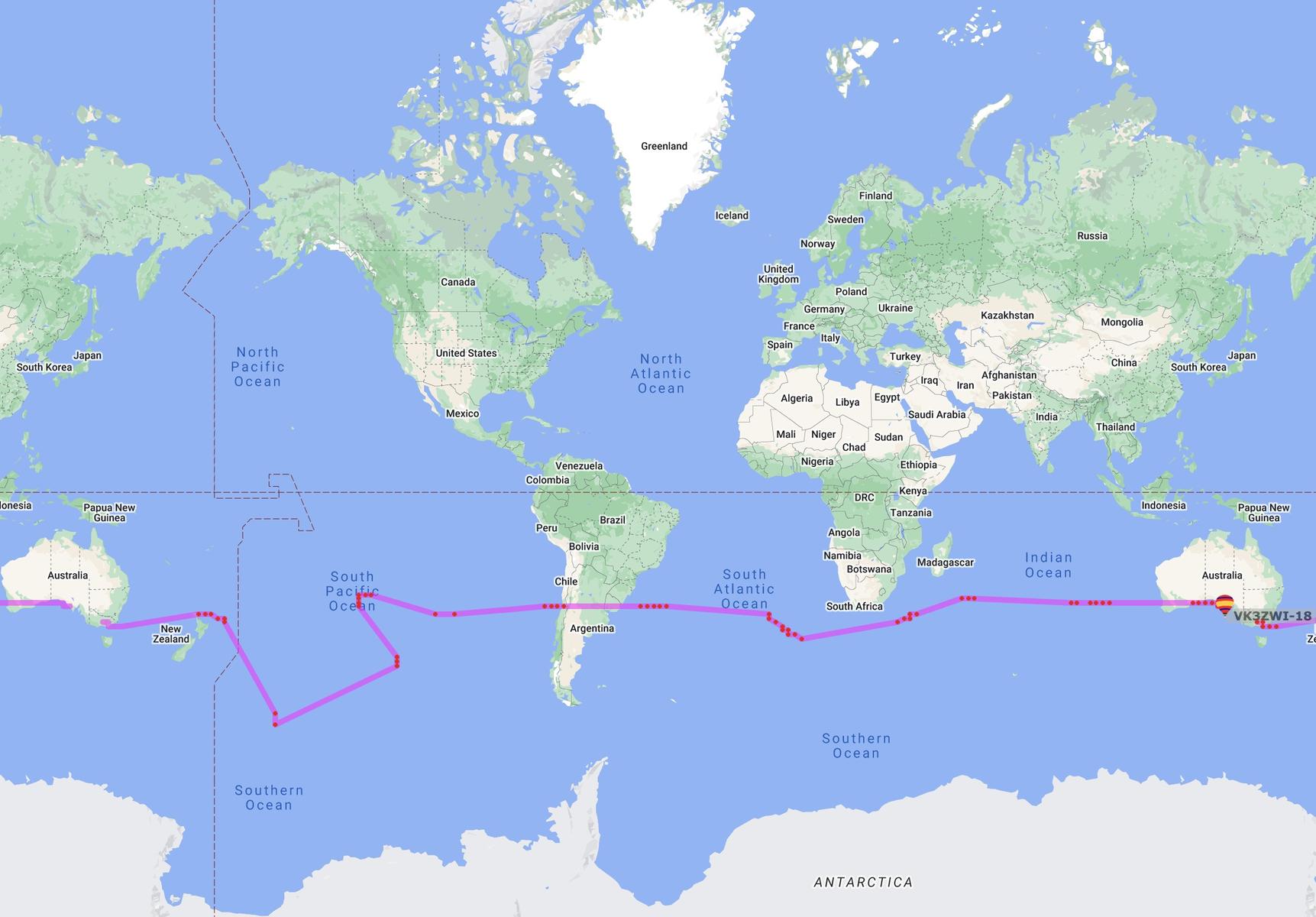Balloon Launch
Pictured: Evan, Darren, Sammy and Varun holding the party balloon used in the flight

Balloon Launch
Pictured: Evan, Darren, Sammy and Varun holding the party balloon used in the flight
On June 2nd a group of year 7 students released what is known as a pico balloon from the Huntingtower oval. The pico balloon is a small 600mm diameter party balloon inflated with helium that carries a payload that comprises a GPS receiver and radio transmitter and is powered by two, miniature solar panels. The total payload of the balloon weighs only 17 grammes. The balloon was configured to float to an altitude of 12,000 meters and up into the high speed wind of the southern jet stream. Jet streams are relatively narrow bands of strong wind in the upper levels of the atmosphere that circle the globe. The winds blow from west to east and are caused by the earth's rotation.
The objective of the launch was to circumnavigate the southern hemisphere using the jet stream. The balloon was launched and flew east across New Zealand and then turned south toward Antarctica. It then looped back north and continued across the Pacific Ocean crossing South America over the top of Santiago in Peru. The flight continued across the South Atlantic ocean and under Africa, crossing into the Southern Indian Ocean. It returned across the Australian mainland and completed the circumnavigation across 145 degrees over New South Wales. The balloon was tracked by a network of radio amateurs around the world and the position and altitude plotted on the Huntingtower STEM website.
The total journey took only 9 days, flying approximately 38,000 kms at an average speed of 175 km/hr. It is extraordinary that such a fragile device can be configured to fly at altitude and speed over such a distance. The balloon is currently continuing across the Pacific Ocean attempting a second pass around the globe.
On Thursday June 24, the balloon completed its second circumnavigation of the Southern Hemisphere. It has travelled around 80,000 kms over the past 3 weeks at an average speed of 178km/hr. Just amazing considering it's a 600mm party balloon released from Snowden Oval!


The image above shows the balloon flight path over the 9 days.
The image below shows Year 7 students Sammy and Darren holding the tracking electronics which forms the bulk of the payload.


Greg Hellard
Head of STEM